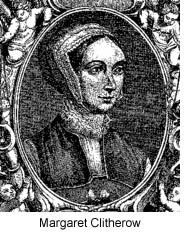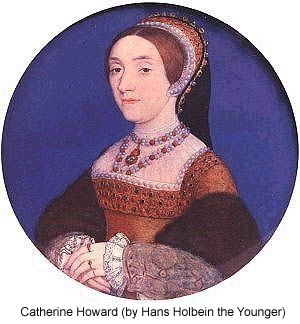The Ghosts of York
by Jillian Schedneck
Named the most haunted city in the world by the Ghost Research Foundation International (GRFI), York's frightening past can be an entertaining and humorous way to learn its history -- or a good way to wake up in the middle of the night, wondering if your hotel room has also had a haunting or two. For every room, building or street seems to be haunted in this bustling, beautiful city. And it isn't hard to find a ghost tale or two, or 140, which is the number of ghosts in York, or even 504, the number of recorded hauntings. In this town, ghost hunting can be for amusement, as well as serious business.
The purpose of GRFI is to investigate possible ghostly phenomenon throughout the world. Jason Karl, president of the organization, has traveled extensively, working on research projects across the globe. He said York has more ghosts than any other city. To residents of York, this comes as no surprise.
York has around four million visitors a year, and there are plenty of people competing to show them the ghosts of the city. One of the best and oldest is the Original Ghost Walk, where you will hear some of the most famous tales of ancient betrayal and persecution. You will also hear how York's violent and unruly past shows itself today in the form of ghostly spirits, as well as the legends that have shaped York in the present. This tour, and others like them, can attract one hundred fifty tourists at a time. The Original Ghost Walk meets nightly at 8pm in front of the King's Arms Pub near the Ouse Bridge. For something different, the York Boat Ghost Cruise is another option for fun mixed with fright.
 Another place meant to educate and scare is the York Dungeons. With tales of the plague and infamous executions, this museum brings together the fun of gore with the fascination of history. There is a guided tour of 14th century York, infected by the plague, where you can learn how the disease started and spread, while surrounding yourself in the awful experience of terror and death. There is also an exhibit featuring Dick Turpin, the famous highwayman, where you can watch him executed. There is another criminal on display as well: Guy Fawkes. Visitors can watch him get tortured for the infamous Gunpowder Plot. The mission of the recently revamped museum is to entertain, inform, as well as educate.
Another place meant to educate and scare is the York Dungeons. With tales of the plague and infamous executions, this museum brings together the fun of gore with the fascination of history. There is a guided tour of 14th century York, infected by the plague, where you can learn how the disease started and spread, while surrounding yourself in the awful experience of terror and death. There is also an exhibit featuring Dick Turpin, the famous highwayman, where you can watch him executed. There is another criminal on display as well: Guy Fawkes. Visitors can watch him get tortured for the infamous Gunpowder Plot. The mission of the recently revamped museum is to entertain, inform, as well as educate.
After hearing and interacting with all of these tales and legends, if you would still like to perform your own investigations, ghost detective Garry Goldthorpe of York has some suggestions for those seriously thinking about ghost hunting. He advises to bring along a good tape recorder to places you think might be haunted and record for an hour or so. Then play the tape back on high volume. You'll be surprised by what you might find: voices that aren't supposed to be there.
To get you started, here is a taste of some of the tales you'll hear in York.
York is apparently still haunted by 2,000 year-old ghosts: the lost Roman Legion. Harry Martindale, an apprentice plumber installing a heating system in the cellars of the Treasurer's House, spotted the ghosts in 1953. He heard a horn in the distance, and then a disheveled Roman soldier on a horse emerged from the brick wall. This soldier was followed by others, all looking dejected, carrying swords and spears. They appeared to be walking on their knees, but really an old Roman road is located fifteen inches below the cellar, so the ghosts could have been walking on their own familiar road, on their way to the Minster. Others after Martindale have spotted these soldiers as well, so many that the area is now closed to visitors.
In the 19th century, an orphanage known as the York Industrial Ragged School was the site of ghastly murders. An avaricious master spent little on clothing and feeding the children, and so they died in great number. He left the bodies to rot in a locked cupboard, and then one day thought he heard their terrified screams. In a rage, he killed the remaining children. The next morning he was brought to an asylum. The ghosts of the children are said to remain, their spirits alternating between laughter and horrifying screams.
 Some stories aren't only about revenge, or old battles, but also injustice and intolerance. Margaret Clitherow was a persecuted Catholic during the time of Henry VIII's reign, when all the monasteries were being dissolved. She continued to practice her faith, as well as hold mass and harbor Catholic ministers. For her crimes, she was crushed to death in the prison under Ouse Bridge. She was canonized in 1970. Her spirit remains in the town of York. Some stories aren't only about revenge, or old battles, but also injustice and intolerance. Margaret Clitherow was a persecuted Catholic during the time of Henry VIII's reign, when all the monasteries were being dissolved. She continued to practice her faith, as well as hold mass and harbor Catholic ministers. For her crimes, she was crushed to death in the prison under Ouse Bridge. She was canonized in 1970. Her spirit remains in the town of York.
Another tale of religious persecution is told on the Original Ghost Walk, when tourists are brought to Clifford's Tower. In 1190, the Jewish population of York took refuge from persecution in the tower. The old wooden tower was burned. It was rebuilt from stone by Henry III in the 13th century. The guides on the tour will tell you that every hundred years, on the anniversary of the persecution, the tower mysteriously turns red, in remembrance of the fire, and all those who shed blood and died on that night.
A popular ghost is the Grey Lady, who haunts the room behind the dress circle of the Georgian Theatre Royal. She is said to have been a nun in the Middle Ages who fell in love with a nobleman. Her love was requited, and for her crimes, the Grey Lady was locked in a windowless room of the Old Hospital of St. Leonard, which has now become the Theatre Royal. The room was sealed with bricks, becoming the nun's living tomb. Despite all her troubles, seeing the Grey Lady before a performance is meant to be a good omen.
 There are also tales of famous Tudor royalty still lurking in York. In 1572, the Earl of Northumberland, Thomas Percy, was beheaded for treason. He did not support the new reign of Protestant Queen Elizabeth, since he was a devout Catholic. He was buried in the churchyard of the Holy Trinity Goodramgate. His form can still be found surrounded by the graves. There are also tales of famous Tudor royalty still lurking in York. In 1572, the Earl of Northumberland, Thomas Percy, was beheaded for treason. He did not support the new reign of Protestant Queen Elizabeth, since he was a devout Catholic. He was buried in the churchyard of the Holy Trinity Goodramgate. His form can still be found surrounded by the graves.
Another royal is among the ghosts of York. Queen Catherine Howard's ghost, one of the wives of Henry VIII, was spotted at the Principal's House at the King's Manor, which is one of the more recently erected buildings. The Queen was beheaded shortly after having an affair with Thomas Culpepper at the King's Manor in 1541. The site of the new building was the old Rose Garden, where the Queen liked to spend much of her time. This ghostly Tudor Lady appeared and walked right through a cupboard, and then through the maid of the manor!
There are tales of beautiful women denied Christian burials, those dying for their religion and ways of life. There are tales of persecution and execution, and those spirits still seeking retribution. These ghost stories are tales of human drama, betrayal, love, willful neglect and traitors. Even after death, these stories still seem to have consequences; these ghosts are still seeking recognition for their own crimes or crimes done to them. The tales continue in the haunting, in the imagining, in the telling. It seems as though any spirit with a score to settle resides in York, and I don't think the town, or its people, would want it any other way.
Related Articles:
- The Treasures of York, by Pearl Harris
- https://www.timetravel-britain.com/articles/towns/york.shtml
- Jorvik: The Viking City of York, by Brenda Ralph Lewis
- https://www.timetravel-britain.com/articles/towns/jorvik.shtml
- York Timeline
- https://www.timetravel-britain.com/articles/towns/yorktime.shtml
More Information:
We regret that we no longer have the resources to maintain up-to-date links and/or hours and pricing details for the various sites and attractions listed on this website. For more information about the location(s) listed above, please use your favorite search engine or visit Wikipedia.
Jillian Schedneck has been published in Student
Travels Magazine, Grad Source Magazine, Transitions
Abroad, College Bound Magazine, Student
Traveler, the Allston/Brighton Tab and Pupil
Magazine. She was the editor of budgetbritain.com, a website
that promoted study, travel and work in the UK to US students.
She enjoys writing articles that combine England's fascinating
history with her own travel experience. She lives in Morgantown,
West Virginia.
Article © 2005 Jillian Schnedneck
Images courtesy of Wikipedia.org
|
